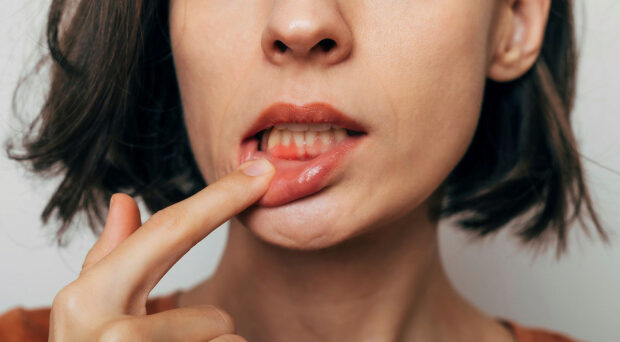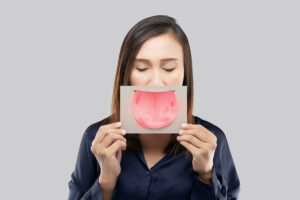
What is oral mucositis?
Oral mucositis means that the inside of your mouth is red, swollen, and has sores or wounds. It is one of the most debilitating and bothersome side effects observed in cancer patients treated with chemotherapy. The incidence and severity of oral mucositis depend primarily on the chemotherapy regimen and doses used. Antimetabolites, platinum derivatives, taxanes, anthracyclines, irinotecans, and alkylating agents can all promote oral mucositis to varying degrees. The progression and severity of mucositis also depend on the patient’s characteristics. Some of the known risk factors are age, sex, body mass index, compromised drug clearance conditions, and genetic susceptibility.
Oral mucositis occurs after a complex sequence of biological events involving direct and indirect pathogenetic mechanisms. The direct mechanisms include inhibition of DNA replication and regeneration of mucosal cells by anticancer therapy. The indirect effects result from the release of inflammatory mediators, loss of protective saliva components, and neutropenia, which in turn promotes infection in affected tissues.

It develops soon after chemotherapy within a day or two and is associated with severe pain, changes in taste, dysphagia, nutritional deficiency, secondary fungal infection, bacterial infection, and altered speech. This affects patients’ quality of life and may cause delays or adjustments in anti-cancer treatment doses, or even early cessation of treatment. Therefore, good supportive care is essential for the management of mucositis.
Treatment approaches
New clinical practice guidelines for the management of oral mucositis developed by the Multinational Society for Supportive Care in Cancer and the International Society of Oral Oncology (MASCC/ISOO) suggested several approaches to managing oral mucositis such as analgesics, cryotherapy, growth factors, basic oral care, anti-inflammatory agents, natural agents, and photobiomodulation. However, unfortunately, there are no standard guidelines for managing these often intolerable side effects of cancer treatment for patients.
Photobiomodulation (PBM) therapy, formerly known as Low-Level Laser Therapy (LLLT), is the application of red or near-infrared light (600 – 1000 nm) to injured tissue to improve the healing process, reduce inflammation and relieve pain. The World Association of Photobiomodulation Therapy (WALT) group outlined the evidence and prescribed the potential prophylactic and therapeutic effects of PBM on the side effects of cancer therapy.
Preconditioning refers to the pretreatment of tissues by exposing them to low levels of stimuli that can trigger a protective response against subsequent severe damage. The concept of preconditioning of tissues and organs prior to medical intervention has been in use since antiquity, and the processes associated with these phenomena have been the subject of much literary discussion. In terms of cells that will be subjected to stress, it is possible to increase their ability to survive and withstand damage associated with treatment, in addition to their willingness to withstand bouts of oxidative stress. It has also been found that cells are more flexible and more able to withstand chemical and radiological damage through prior exposure to light.

The MASCC/ISO Expert Panel made recommendations for the use of intra-oral PBM therapy using a laser for the prevention of oral mucositis and associated pain. Recommendations were limited to cancer patients who are being treated by one of the following methods: hematopoietic stem cell transplantation, head and neck radiotherapy (without chemotherapy), and head and neck radiotherapy with chemotherapy. However, there were no recommendations for other groups of patients or other sources of light.
A large number of studies have been conducted to evaluate the efficacy of PBM in preventing oral mucositis in patients undergoing hematopoietic stem cell transplantation and in head and neck cancer patients. Studies on cancer patients who receive chemotherapy alone are still limited and most of them focus on treatment rather than prevention.
Preconditioning with photobiomodulation
Knowing that preventive intervention before the development of lesions is the most effective strategy for managing mucositis is why this study, registered with ISRCTN, is so important. Once the lesions develop, the matter becomes more complicated due to the clinical problems they cause on the one hand, and the impediment of healing (due to systemic debilitation resulting from chemotherapy) and secondary infection on the other. Hence, this study aims to evaluate the effectiveness of preconditioning by PBM in preventing chemotherapy-induced oral mucositis.
Comments